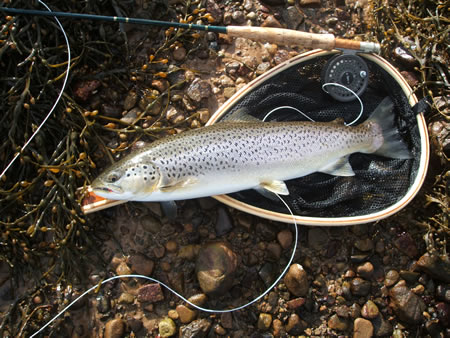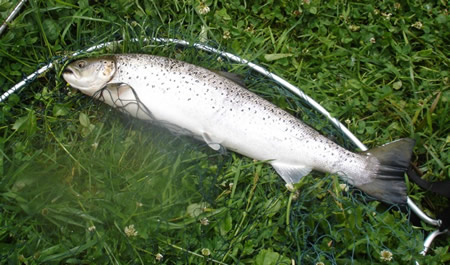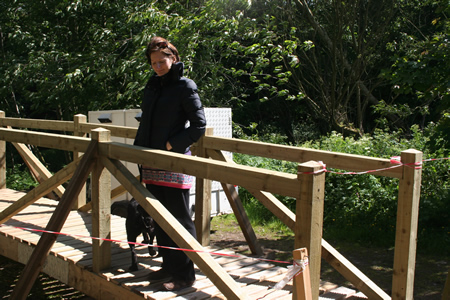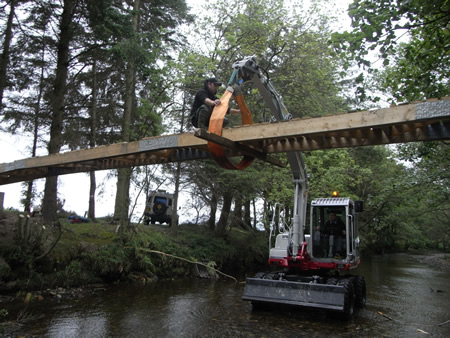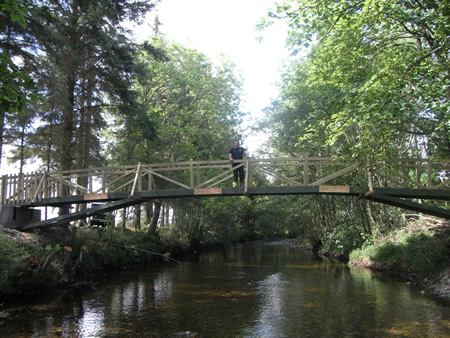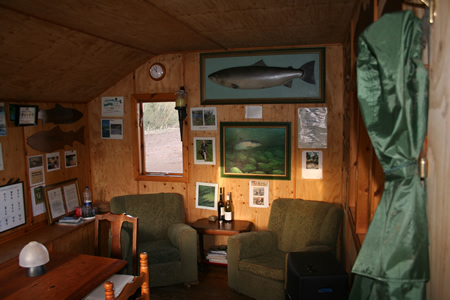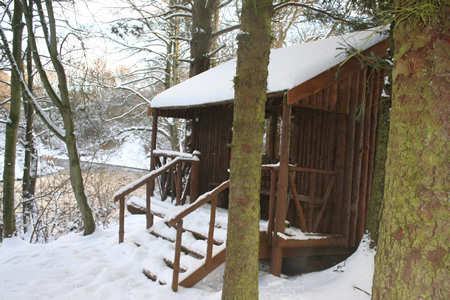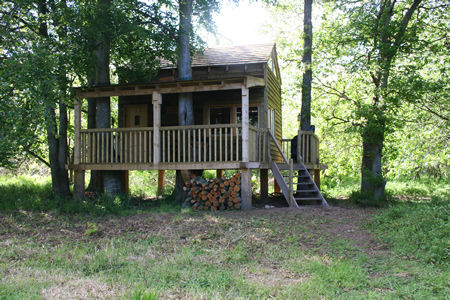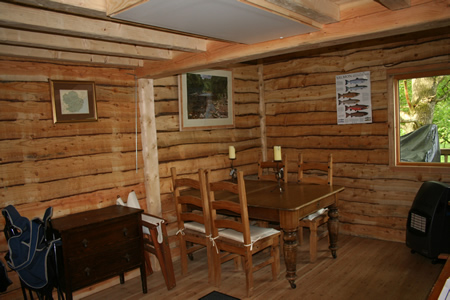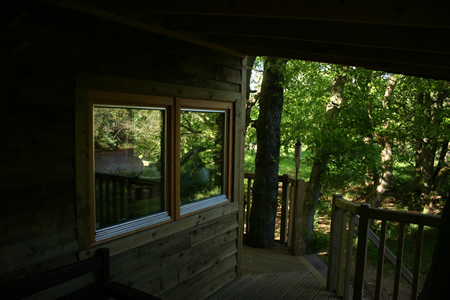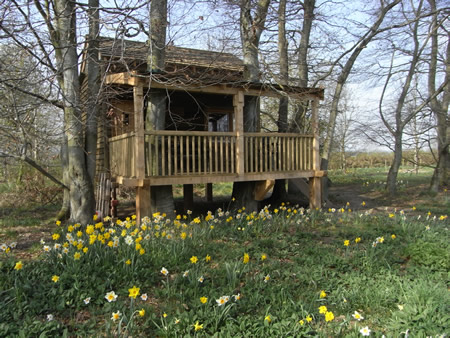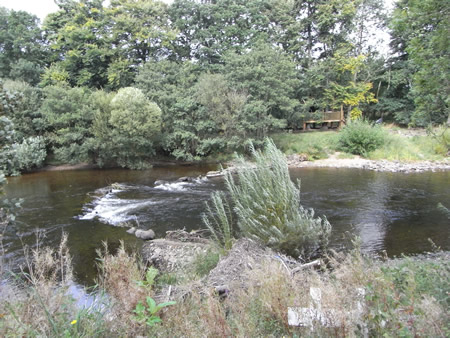These bulletin blogs represent news about Finavon and the South Esk, and my views as a riparian owner. They are not the views of any other organisation, nor are they designed to promote the interests of any individual or organisation other than Finavon Castle Water and factors affecting the fishery. Tony Andrews
The last few years have seen spates in June, the effect of which has been to encourage the main run of sea trout to move quickly into the upper river catchment. This trend is great for conservation and helps our recently rather poor stocks of sea trout to recover by encouraging them to migrate upstream to the upper tributaries, where they should start spawning in late September. However, the trend has not been quite so good for Finavon’s sea trout catch returns, largely because the shoals of school sea trout, averaging about two and a half pounds, have not had time to settle into the traditional sea trout pools where the night fisherman can catch them.
The photograph below is of a 5lbs Orkney sea trout caught (& returned) in the sea. We are regularly getting fish of this quality in the South Esk.
So, spates are good for the fish, but not so good for the fisherman! My view, as the chap lucky enough to own this glorious little fishery, is that it is reassuring to see our sea trout in such good nick and, while I regret that my tenants, visitors and syndicate members aren’t getting regular night fishing sport, in the context of the wellbeing of sea trout stocks and the health of the river, these spates are a good thing. Having said all that I note that on the 24th of June the catch total for FCW stands at 40 salmon (all multi sea winter) and 33 sea trout, which is above average for the last ten years, and on par for the last 120 years!
With all this high water it will have been easy for salmon and sea trout to enter the river, and many of them will have avoided that southwards rotating gyre that takes them into Lunan Bay and risk of getting enmeshed in the Usan nets. Moray and I have noted that the run of MSW salmon is fading a bit now and we are starting to think about the arrival of the grilse, the main run of which should start in the next couple of weeks. Yesterday’s total of one (9lbs) salmon and nine sea trout (up to 4.5lbs) and three salmon and a number of sea trout hooked but not landed, gave us an indication of what was going on as the spate slowly subsided and the water cleared.
This is the 4.5lbs sea trout caught and returned in Frank’s Pool by Ian Maclean on 23 June 2011
I have just been down to the river and seen that the level rose about nine inches overnight, but that, after all the leaching of the ground with the huge amount of recent rain, the water is reasonably clear. It is obviously a day for salmon and sea trout to head upriver. It remains to be seen if we can catch a few on the way!
Don’t forget to view the FCW webcam if you want to know how fishable the river is. Optimum height when most Finavon pools fish well is when the water is bulging around the sides of the armchair boulder, and occasionally slopping over the top. It’s rule-of-thumb I know, but a very effective fishing measure!
TA
